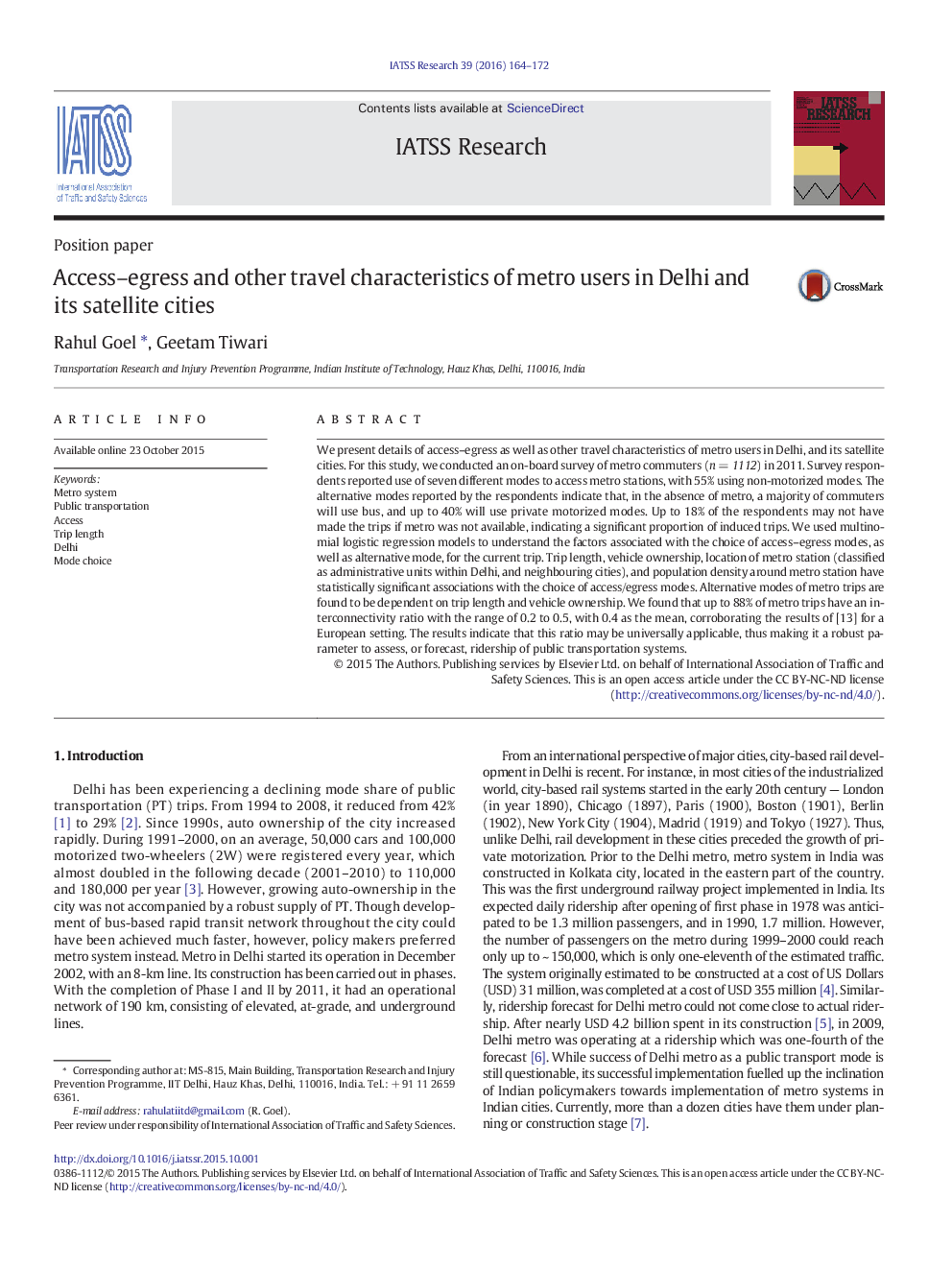| Article ID | Journal | Published Year | Pages | File Type |
|---|---|---|---|---|
| 1104609 | IATSS Research | 2016 | 9 Pages |
•Interconnectivity ratio of metro trips found to be consistent with a European study.•We used multinomial logistic regression models for access–egress mode choice and alternative mode for metro.•Models show a significant role of trip length and vehicle ownership
We present details of access–egress as well as other travel characteristics of metro users in Delhi, and its satellite cities. For this study, we conducted an on-board survey of metro commuters (n = 1112) in 2011. Survey respondents reported use of seven different modes to access metro stations, with 55% using non-motorized modes. The alternative modes reported by the respondents indicate that, in the absence of metro, a majority of commuters will use bus, and up to 40% will use private motorized modes. Up to 18% of the respondents may not have made the trips if metro was not available, indicating a significant proportion of induced trips. We used multinomial logistic regression models to understand the factors associated with the choice of access–egress modes, as well as alternative mode, for the current trip. Trip length, vehicle ownership, location of metro station (classified as administrative units within Delhi, and neighbouring cities), and population density around metro station have statistically significant associations with the choice of access/egress modes. Alternative modes of metro trips are found to be dependent on trip length and vehicle ownership. We found that up to 88% of metro trips have an interconnectivity ratio with the range of 0.2 to 0.5, with 0.4 as the mean, corroborating the results of [13] for a European setting. The results indicate that this ratio may be universally applicable, thus making it a robust parameter to assess, or forecast, ridership of public transportation systems.
